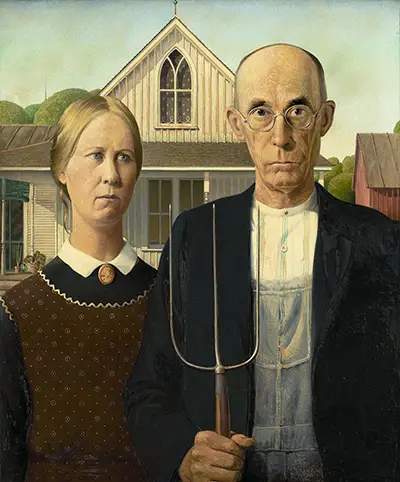Grant Wood was an American Regionalist artist who produced many depictions of the rural and small-town communities of the United States. He was active in the first half of the 20th century and remains best known for his iconic American Gothic.
Summary
The artist would produce a large number of charming scenes which perfectly captured life in the American countryside, with rolling hills and small farming communities. There was also a good number of group portraits in which he focused on the activities of local people, allowing city-dwellers to get a better understanding of this alternative way of life. Although his output has been reduced to just a few number of standout artworks by some, Wood actually worked in quite a different number of disciplines in order to make himself as employable as possible, particularly in his early years as a professional artist. He would gain some artistic experience whilst in employment with the army around the time of WWI, before then spending a number of years travelling and studying within Europe. He would ultimately draw in a good number of different influences across his lifetime in order to develop a fairly unique artistic style.
Popularity within the US
Grant Wood was somewhat inventive with some of his compositions, finding interesting ways of capturing traditional life. His content would draw praise and derision in equal measure, with Europeans finding his approach somewhat too traditional, whilst Americans appreciated his focus on their own nation. Previously, most American artists had simply re-hashed European ideas but there was a growing desire to see more authentic, local issues addressed and Wood was passionate about doing so. One might also suggest that Europeans would be a little snobbish towards art from North America until the balance of power switched during the 20th century. The likes of Homer and Wood would offer a prediction of this change, though could not achieve it on their own. Things have moved full circle today, with New York being potentially the art capital of the world, replacing Paris many years ago. Wood's own output has fallen in and out of fashion several times, with his style offering a return to older, simpler times.
Style and Techniques
Wood incorporated realistic detail within his scenes but could never be classed solely as a Realist painter, because of some of the tweaks that he made to his compositions. Many of his rural scenes would feature strange but innovative perspectives, which gave some of his paintings a quirky edge. His portraits would also focus on rural workers and their families, exposing them to the world when most other artists had chosen to cover the more modern city types instead. One can feel the artist's love of rural America within these paintings, and this gave his entire oeuvre a great authenticity that appealed to patriotic Americans. He displayed his love of the country not through flags or military scenes, but instead in a more subtle manner through the people that he included, and the simplicity of their lives. His work was immediately accessible to his American audience, appealing directly to the mainstream and this would prove a key element to his eventual success.
































